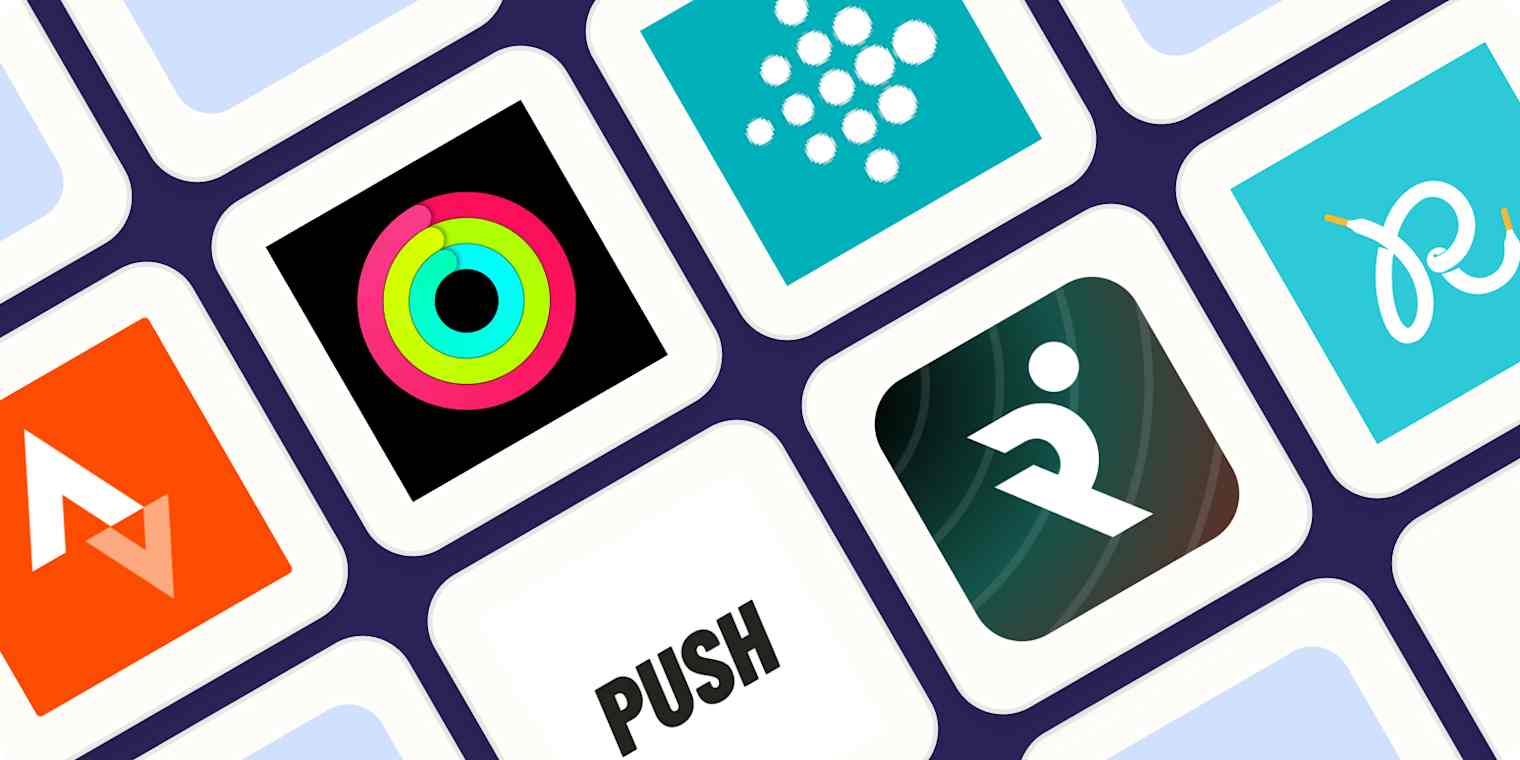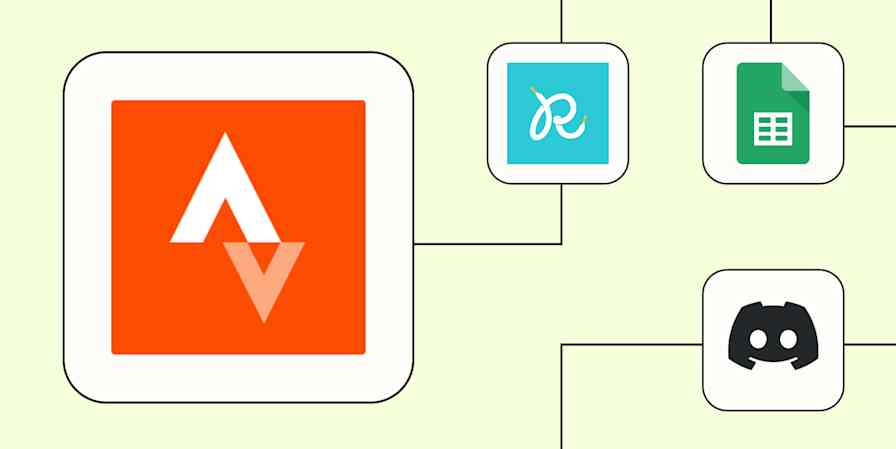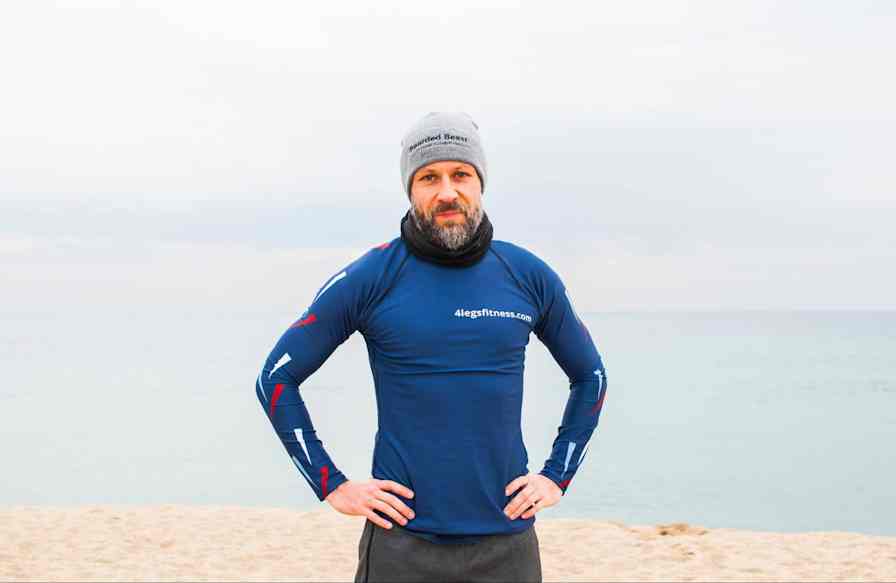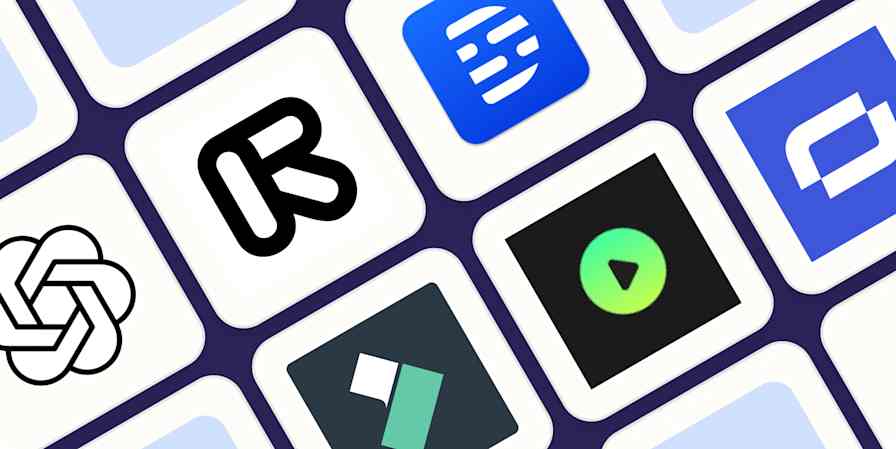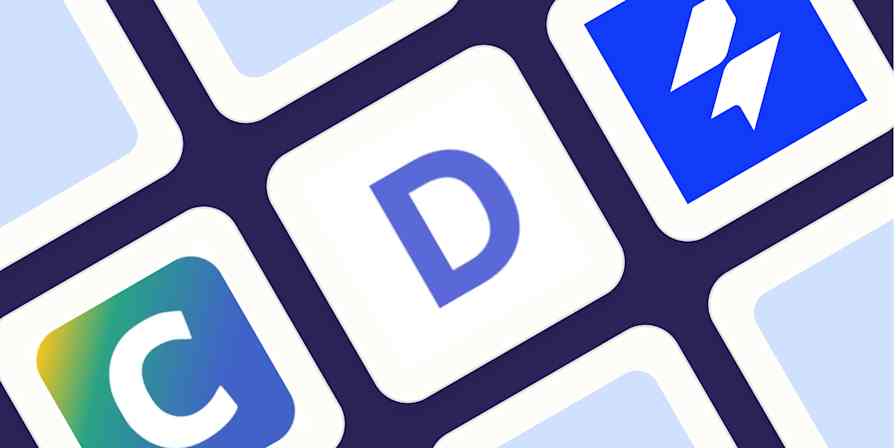If you're overwhelmed by the number of fitness apps on the market, you're not alone. There are seemingly a bajillion fitness apps available, and from logging your personal bests to tracking your pickleball wins, each has its own niche.
That's great in terms of giving users variety—but when you're scoping out a new app, it can often feel like you're comparing apples to oranges. And staying fit is hard enough; your fitness app should make it easier, not more complicated.
As someone who's tried almost every workout under the sun, I wanted to create a best-of list that you can actually trust. For this list, I evaluated over 25 different fitness apps, from running apps to weightlifting logbooks to all-around activity trackers. Here are the nine best fitness apps I found—and what each is best for.
The best fitness apps
Strava for those who like a little competition
Apple Fitness for Apple users
Fitbit for an entry-level app
PUSH for science-backed gains
Runna for race training
Strong for strength training
Hevy for busy people
Runkeeper for running beginners
Gymverse for strength training beginners
What makes the best fitness app?
Before researching the best fitness apps on the market, I spent some time thinking about the universal traits that all great fitness trackers have in common, no matter their niche. Eventually, I landed on four key qualities:
Ease of use: It has to be easy to stop, start, and log activity. Bonus points if it logs overall physical activity like daily steps or basal metabolic rate, not just workouts, or if it lets you plan workouts ahead of time.
Appropriate metrics: The best fitness app tracks the right things for the activity you're doing—like heart rate, calories burned, distance, splits, elevation gain, plates/weights, and personal bests (PBs) or personal records (PRs). If it can log more than one kind of workout, that's great too.
Accuracy: For a fitness app to make sense, the results it tracks can't be wildly off-base. If it works well with a wearable like an Apple Watch, that will absolutely increase the accuracy.
Affordability: You're already paying for the gym or your fitness equipment. The best fitness tracker doesn't add too much to the cost of staying in shape.
To give each app I tested a fair shake, I tried to test them in a uniform way:
For apps geared towards running and other cardio-based activities, I tested each one with a run or walk (or a combination of the two) of at least one mile. Unfortunately, it's the dead of winter where I live, so most of my testing was indoors on a treadmill. On the plus side, my treadmill is fairly accurate in terms of speed and distance, so it gave me a good baseline to compare each app's metrics.
For strength-training apps, I did a strength-training session—either my usual routine or a routine suggested by the app.
And for apps that can track lots of different workout types, I did one cardio workout and one strength workout for each.
I should also note that there's one specific kind of fitness app I didn't consider: apps that are primarily for accessing gated content or classes, like the Blogilates or Peloton app. While I love apps like these, and they have their place in a robust workout routine, they generally don't collect fitness data—so they serve a very different purpose.
With all of that in mind, here's a look at the best fitness apps.
The best fitness apps at a glance
Best for | Standout feature | Pricing | |
|---|---|---|---|
Those who like a little competition | Live beacon tracking for safety | Free; paid plans from $11.99/month | |
Apple users | Seamless wearable connectivity | Free; paid plans from $9.99/month | |
An entry-level app | Daily readiness scores with premium subscription | Free; paid plans from $9.99/month | |
Science-backed gains | Predictive analytics to track future progress | From $13.49/month | |
Race training | Community groups based on upcoming races | Free; paid plans from $19.99/month | |
Strength training | Comprehensive exercise library with demos | Free; paid plans from $3.99/month | |
Busy people | Sort by workout location or equipment available | Free; paid plans from $2.99/month | |
Running beginners | Flexible goal setting | Free; paid plans from $9.99/month | |
Strength training beginners | Integrated video tutorials | Free; paid plans from $23.99/month |
Best fitness app for those who like a little competition
Strava (iOS, Android)

Strava pros:
Accurate mapping of outdoor activities
Live beacon tracking for safety
Amazing social and community features
Strava cons:
Not suitable for indoor workouts
Mediocre wearable connectivity
A few weeks ago, I was telling a friend that I'd gone for a walk on the trail near my house.
"Ok, but if you didn't log it on Strava, did it even happen?" she quipped.
That's a perfect summation of the cultural hold Strava has over a huge number of fitness enthusiasts. Over the last five years, Strava has become the go-to app for tracking runs, hikes, and more. But is it actually a great fitness tracker?
Let's start with the pros: Strava offers great mapping for outdoor activities like cycling. It's also designed with sharing and competition in mind—you can follow friends, browse their recent activity in your feed, and discover popular routes nearby. And if you pay for the premium option, Strava offers live beacon sharing (which is a great safety feature if you often go for long outdoor fitness excursions) and relative effort tracking, so you can see how your fitness improves over time.
My husband, who's an avid cyclist, mentioned that Strava also connects directly with bike computers and indoor road bike trainers like Zwift. Because I don't bike enough to have that fancy schmancy equipment, I didn't test either of these features—though I can see why they would be a huge plus for cyclists.
Unfortunately, if you primarily work out indoors, you won't get much out of the app. It's just not great at tracking activities like Pilates or weightlifting. And if you're privacy-conscious or just not all that competitive, a lot of the strongest features are kind of useless.
In testing, I also found the wearable connectivity unimpressive; while accurate, it showed only basic metrics (pace and heart rate) during my run. It didn't note any laps or splits, and there wasn't an option to mark those manually. If you pay for the premium subscription, you can see those metrics in the mobile app afterwards—but they weren't visible on my Apple Watch during the activity. That made it hard to pace myself in a multi-mile run.
You can also connect Strava to thousands of other apps with Zapier, so you can do things like automatically track your workouts in Google Sheets or Notion. Learn more about how to automate Strava, or get started with one of these pre-made workflows.
More details
Strava pricing: Free for basic features; paid plans from $11.99/month
Best fitness tracking app for Apple users
Apple Fitness (iOS)

Apple Fitness pros:
Beautiful, intuitive interface
Seamless wearable connectivity
Dozens of supported workout types
Includes all key features for free
Apple Fitness cons:
Questionable accuracy for less-common workouts
Mediocre recovery tracking
Not amazing for tracking strength training
If you're an avid Apple customer, Apple Fitness might be the first fitness tracker you try. That's because it comes standard—and free—with every iPhone.
In my experience, it's a great multipurpose, all-around fitness app. It tracks both workouts and general activity levels, including flights of stairs climbed and how often you get up and move around throughout the day. And the interface is unbeatable: three colored rings tracking your active calories burned, your minutes of exercise, and whether you stood up at least once an hour, every hour during the day. In classic Apple fashion, it's elegant and easy to understand.
The workout tracking feature also offers lots of options (including, e.g., Pilates and tennis)—though for many workouts, calorie count defaults to the equivalent of a brisk walk. For runs, it marks both mile splits and lets you mark laps manually, as well as tracking heart rate and pace. Apple Fitness isn't amazing at tracking strength training metrics like reps or sets, but if you have a lot of variety in your fitness routine, it can handle a little bit of everything.
However—and this is a big however—to make the most of the app, you do need an Apple Watch, which comes with a hefty price tag. The mobile app can still track your daily steps and exercise calories without an Apple Watch, though it'll be less accurate (especially if you set your phone down a lot).
Another downside is that the sleep and recovery tracking are pretty mediocre. Apple Fitness sets the same daily goal for you, regardless of how well you slept or how hard you worked out the day before. It'll prompt you to adjust this set daily goal once per week, but it's ultimately a fitness app—not a recovery app.
Apple Fitness pricing: Free for almost all features; paid plans from $9.99/month
Best fitness tracker app for getting started
Fitbit (iOS, Android)

Fitbit pros:
Decent all-around activity tracking, plus sleep and nutrition
Achievement badges for motivation
Daily readiness scores with premium subscription
Fitbit cons:
Needs a Fitbit wearable to be really accurate
Requires manual tracking for some activities
Fitbit (owned by Google) is a great Apple Fitness alternative if you don't have an iPhone or Apple Watch (though you can use it if you do, too). In addition to activity tracking, the app offers sleep, food, water, menstrual cycle, glucose, and weight tracking—which are great features if you're trying to be healthier overall. Like Apple Fitness, it has badges for achievements, which I loved since I don't want to compete against anyone except myself. It also offers daily readiness scores if you use it with a Fitbit wearable.
Speaking of wearables: I should note that if you don't use a Fitbit wearable device, you can only really track your steps in the app. And I don't recommend using only the app on your phone, because it's not very accurate: during a treadmill workout, it told me I was walking at a 62 minute/mile pace when I was walking at a 17 minute/mile pace.
But when paired with a Fitbit device, you get a lot more from the Fitbit app—including much more accurate activity tracking. I was able to pick up a used wearable device on Facebook Marketplace for about $40, though a brand-new one can cost significantly more.
The Fitbit app offers two tracking options: live tracking and manual tracking. The live tracking performed alright in terms of accuracy and metrics, but the app alone only gives you four options (run, walk, hike, and bike) to choose from. With a Fitbit device, you can live track a range of other workouts. The manual tracking feature was a bit more robust, with a long searchable list of activities to choose from—as long as you're ok manually entering your workout information. And like Apple Fitness, it's not the most granular when it comes to strength training metrics.
Overall, Fitbit could be a great choice for someone who's just starting their fitness journey and doesn't want to spend a pretty penny just yet. Even though the app doesn't offer any standout features, it includes solid basics at a decent price point. Plus, it captures more than just workouts—making it an affordable all-around tracker.
Fitbit pricing: Free for basic features; paid subscription costs $79.99/year or $9.99/month
Best fitness app for science-backed gains
PUSH (iOS, Android)

PUSH pros:
Personalized, science-backed training programs
Predictive analytics to track future progress
Sleek interface
PUSH cons:
Only tracks strength training, not cardio
Not for freestyle workouts
No wearable connectivity
PUSH is not for people who want to freestyle it. If you like to decide whether it's leg day based on how you felt when you rolled out of bed, you probably won't like this fitness tracker.
That's because PUSH uses AI to generate a strength training program for you, based on the science of progressive overload. You can also manually create a program yourself, but the app isn't intended to record one-off workouts; it's geared towards moving you through a program of weight-bearing exercises.
The onboarding experience for this fitness tracker is really slick. It walks you through a series of questions about your strength training experience, which muscle groups you'd like to focus on, and more. It then creates a personalized program for you to follow.
When it came time to do my first AI-generated workout, the experience continued to shine. PUSH made it intuitive to start a workout and to follow along as the app pushed me through the program it had created for me. It even cued me when it was time to take a break between sets.
The app also incorporates predictive analytics throughout. For example, it showed me roughly how many sets it thought it would take for me to see progress (or as the app puts it, enter the "growth zone"). That's a great way to make training feel more rewarding and sustainable, rather than a never-ending slog.
There are a couple downsides to PUSH. As a general fitness tracker, the metrics aren't super comprehensive; it tracks PRs/PBs and workout length. It also doesn't offer any wearable connectivity whatsoever. PUSH isn't your best choice if you want to track more cardio fitness-type metrics like HR, or if consistent strength training just isn't a priority for you.
PUSH pricing: From $13.49/month
Best fitness app for race training
Runna (iOS, Android)

Runna pros:
Structured training plans, including strength
Community groups based on upcoming races
Calendar sync so you can stay on top of your training plan
Runna cons:
One-off run tracking functionality is limited
Lackluster wearable connectivity
I'm not the most competitive person, but I have run the occasional low-stakes 5K, and I do run regularly. Having tried all the go-to running apps before, I was really excited to test Runna because it's a relatively new addition to the running app scene.
First, the good: Runna is a great choice if you're actively training for a race. It offers structured training plans customized to your goals—including strength training, which is something many runners don't do enough of. I also loved Runna's unique twist on social sharing: you can find and join community groups based on upcoming races. Plus the calendar sync feature is great for busy folks who might struggle to stay on top of a training plan.
Now, the not-so-good: using Runna ad hoc wasn't the best experience. It was a bit confusing to start a standalone run (or "free run," as the app calls it), and the tracking wasn't very accurate. The app did give me a chance to manually edit my run at the end, but that only works if you know your speed from, say, running on a treadmill. I tested the app again using it on my Apple Watch, and the free run functionality was still super basic. It actually warned me that tracking via my watch wasn't recommended.
Overall, Runna is a strong option if you want the benefits of a structured running plan without paying for an in-person coach. But the lackluster wearable connectivity is a significant drawback—especially if you do most of your training outside.
Runna pricing: Free for basic features; paid plans from $19.99/month
Best fitness app for strength training
Strong (iOS, Android)

Strong pros:
Workout templates are easy to use
Comprehensive exercise library with demos
The paid subscription offers great analytics, including exercise volume and best set/PR tracking
Strong cons:
Only tracks strength training
Not the most beginner-friendly
If you need a consistent strength training plan, Strong offers everything you need. It's a template-based app, meaning you can choose (or create) a plan for your workout and then save it for future use. I found the template creation interface easy to navigate, and the exercise library was helpful to broaden my exercise horizons. I also particularly liked the analytics that the paid subscription unlocks, like best set tracking.
Here's the thing, though: I've been strength training for several years. The app might feel a little overwhelming as a beginner—though the exercise library is nice, there's no good way to learn unfamiliar moves or machines mid-workout. That's ok if you plan your workouts in advance, but it could quickly get frustrating if you're standing in the middle of the gym trying to figure out what the app is telling you to do.
Overall, Strong is a great app for tracking your strength training, but it's not particularly beginner-friendly.
Strong pricing: Free; paid plans from $3.99/month
Best fitness app for busy people
Hevy (iOS, Android)

Hevy pros:
Workout routines—both popular and custom
Can sort by workout location (home vs. gym) or equipment available
Customizable rest trackers
Hevy cons:
Interface is nothing special
If you spend a lot of time in hotel gyms—or in your home-office-that's-also-sometimes-a-workout-space—you know what a struggle it can be to stick to a routine when you have limited access to facilities. And that can quickly kill any consistency you're working towards.
Hevy helps you overcome those barriers and stick to a routine with just one feature: the ability to sort workouts by location and equipment. During testing, I loved that I could choose between workouts designed for the gym vs. my home—and even select from a range of equipment-free, bodyweight-only exercises.
The app supports freestyling your workout too, which is a nice touch; I was able to start a blank workout and add exercise types and reps/sets as I went. Hevy also worked nicely with my Apple Watch, which meant I didn't have to hold—or keep checking—my phone the whole time.
While it lacks the bells and whistles of some other apps, I still really liked this app. If you live a busy life and struggle to squeeze in a workout, Hevy is great for helping you find ways to keep fit.
Hevy pricing: Free; paid plans from $2.99/month
Best fitness app for running beginners
Runkeeper

Runkeeper pros:
Flexible goal setting
Shoe tracking
Simple interface
Runkeeper cons:
Indoor activity tracking is mediocre
The dynamic goal-setting interface on this app is really, really nice. When you first open Runkeeper (owned by athletic apparel company ASICS), it'll ask you a bit about your goals. You can specify your own, of course, but the app really shines when you use its guided onboarding. It'll let you choose from a few types of goal:
Run without stopping or walking
Run longer distances
Maintain my running ability
Run faster
Finish a race distance
Based on which you choose, the app will put together a running program for you. If I were new to running, this is exactly the kind of experience I would hope for. Runkeeper makes running feel attainable, no matter what progress looks like to you. I also liked that you can tell the app what kind of running shoes you wear, and it'll tell you how many miles you'll get out of them before needing to replace them.
Here's the biggest caveat: the live workout tracking feature wasn't great in "Indoor" mode when I started a run on my phone. It only displayed the time I'd been active for, and audibly called out intervals, pace, and other stats. That's not the most useful for a run tracker; candidly, I expected to be able to see my distance and pace on screen, rather than just hearing it aloud at set intervals. It did let me manually edit the workout when I was done, however, and because I tested the app on my treadmill, I knew roughly how fast and far I went.
I tested it again, this time using the Runkeeper app on my Apple Watch. It was more accurate and displayed my pace. Outdoor mode also offered more of the metrics I would expect from an app called Runkeeper, so if you mostly run outside (or have an Apple Watch), it can work well. So even though the indoor tracking feature needs improvement, Runkeeper can be a solid option. If you're new to running, the dynamic goal-setting experience is worth a little bit of frustration.
Like Strava, you can connect Runkeeper to other apps with Zapier—so you can add workouts to your calendar or analyze them in a spreadsheet, for example. Here are a few popular ways to automate Runkeeper.
More details
Runkeeper pricing: Free; paid plans from $9.99/month
Best fitness app for strength training beginners
Gymverse

Gymverse pros:
Integrated video tutorials
Personalized workout plan creation
Great wearable connectivity
Gymverse cons:
Expensive when compared to similar offerings
After testing PUSH, I felt a bit like it had set an impossible standard for strength training apps. Then I tried Gymverse—and wow. Turns out, I'm not alone: Gymverse has 10k+ app reviews and a 5-star rating on the Apple App Store. So what makes it so great?
Like Strong and Hevy, Gymverse creates a suggested training plan for you. But where it stands out is that the app features integrated video tutorials for each exercise. The videos are clear and well-produced—perfect for people new to strength training.
Gymverse also offers really great wearable connectivity; when I tested it with my Apple Watch, I could start, track, and end workouts on my watch rather than needing to open the app on my phone. And if that's not enough, Gymverse offers calorie tracking when paired with a wearable, which is a nice addition and helps you get a better view of your overall fitness.
There is a notable downside, however, and that's the price. At $149.99/year, it's easily the most expensive app I tested—twice the price of Strava. I can totally see the price being worth it, though, especially if you have a home gym or a cheap gym membership. Gymverse basically takes the place of a personal trainer—so if you need a lot of guidance, it could be well worth the price.
Gymverse pricing: Free for basic features; paid plans from $23.99/month
The best fitness app is the one that works for you
Ultimately, the true mark of a good fitness app is whether you use it—and keep using it. Fitness, like other lifestyle choices, is deeply personal; everyone needs something different out of their fitness journey. Whether you hike, bike, or ride a trike, there's an app for you out there. (Probably—I didn't actually research tricycling for this article.)
Related reading:
This article was originally published in December 2015 by Jayca Pike. The most recent update was in January 2025.
